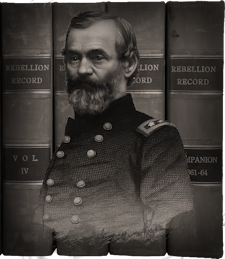February 9.—Secretary Stanton ordered the arrest and incarceration in Fort McHenry of one Doctor Ives, a correspondent of the New-York Herald, on the charge of being a spy, and for violating the rules and regulations of the War Department. According to the order of Secretary Stanton, Ives introduced himself into the chambers of the Department, when private consultations were being held, and demanded news for publication.
—The Seventy-sixth regiment of Ohio Volunteers, under command of Colonel C. R. Woods, passed through Columbus on their way to Kentucky.—Cincinnati Gazette, February 11.
—The efficiency of United States mortar-boats was fully tested to-day by Captain Constable, U. S. N., in the Mississippi River, just below Cairo, Ill., and near Fort Holt, on the Kentucky shore. The experiments showed that thirteen inch shells, filled with sand, could be thrown a distance of three and a half miles— the time of flight being thirty-one seconds, and the recoil of the gun-carriage about two feet. Filled with powder, the shells could be thrown much further.— (Doc. 31.)
—Brigadier-general Charles P. Stone was arrested in Washington this morning, at two o’clock, by a posse of the Provost Marshal’s force, and sent to Fort Lafayette, New-York harbor. The charges against General Stone are: First, for misbehavior at the battle of Ball’s Bluff; second, for holding correspondence with the enemy before and since the battle of Ball’s Bluff, and receiving visits from rebel officers in his camp; third, for treacherously suffering the enemy to build a fort or strong work, since the battle of Ball’s Bluff, under his guns, without molestation; fourth, for a treacherous design to expose his force to capture and destruction by the enemy, under pretence of orders for a movement from the commanding general, which had not been given.



